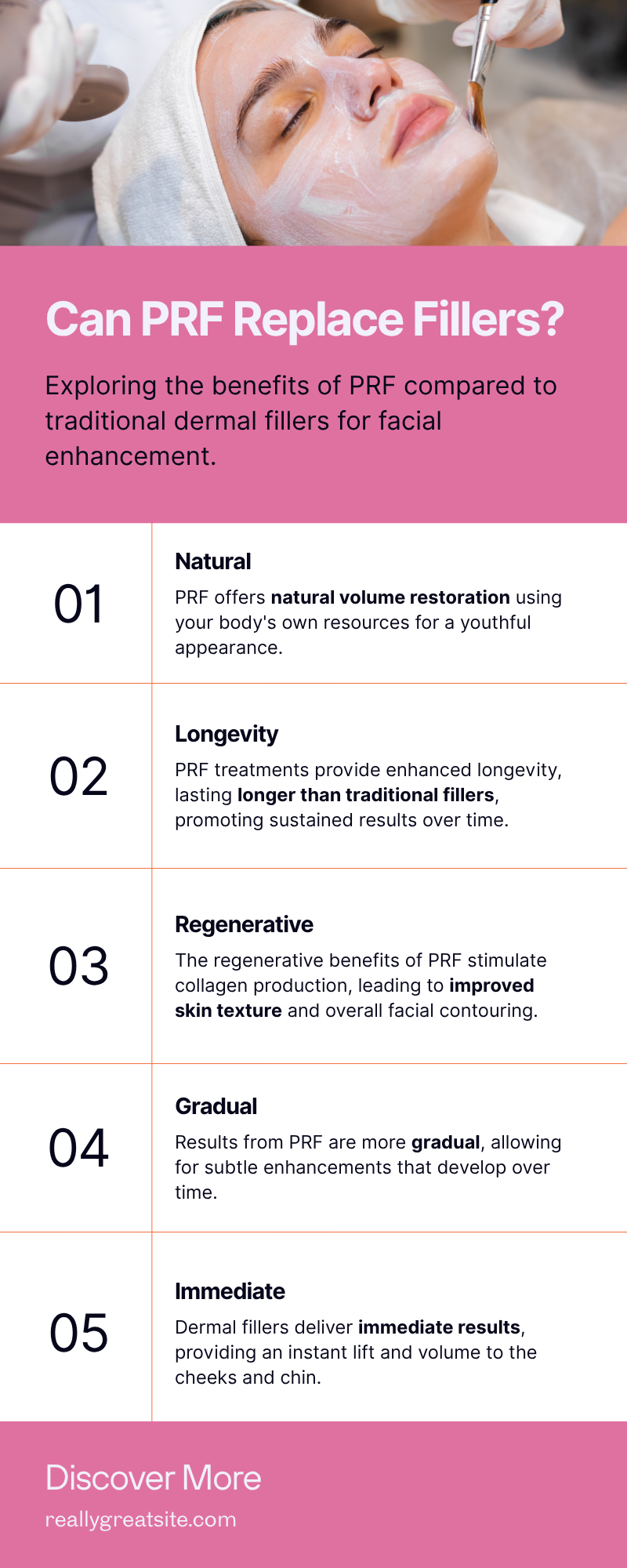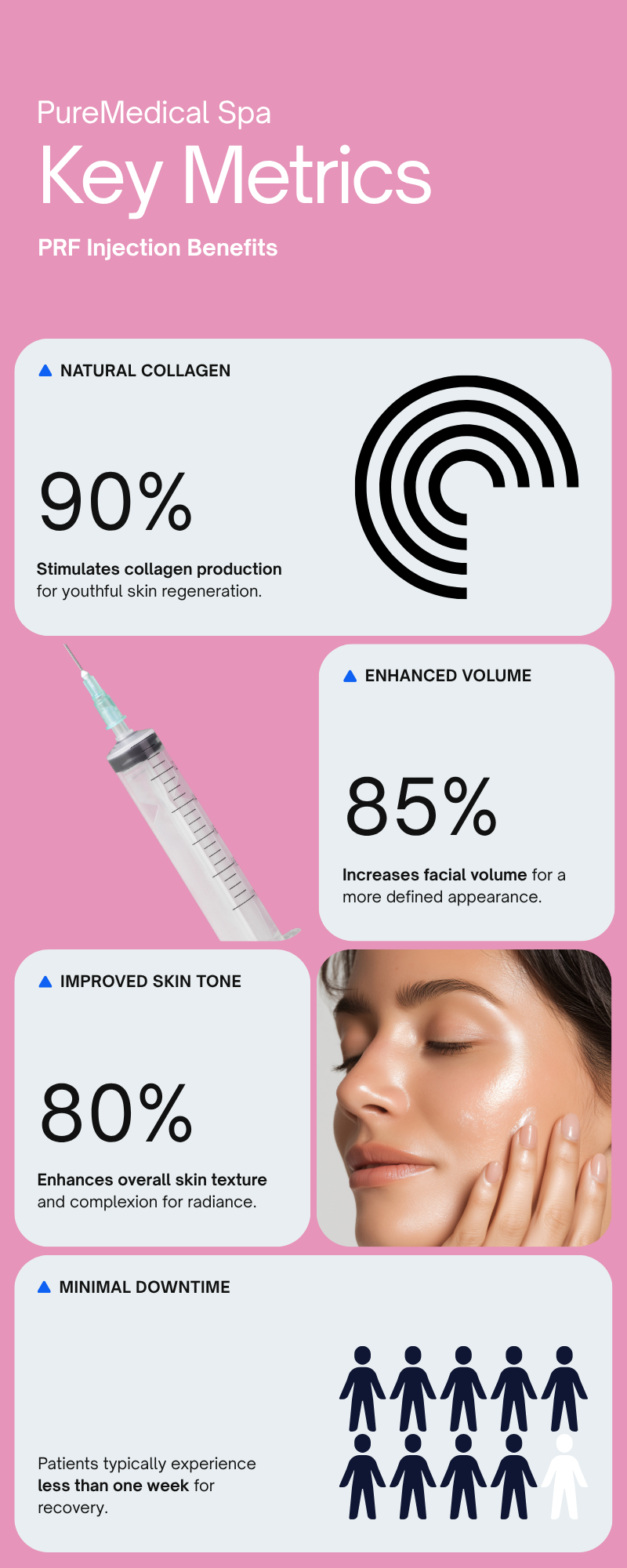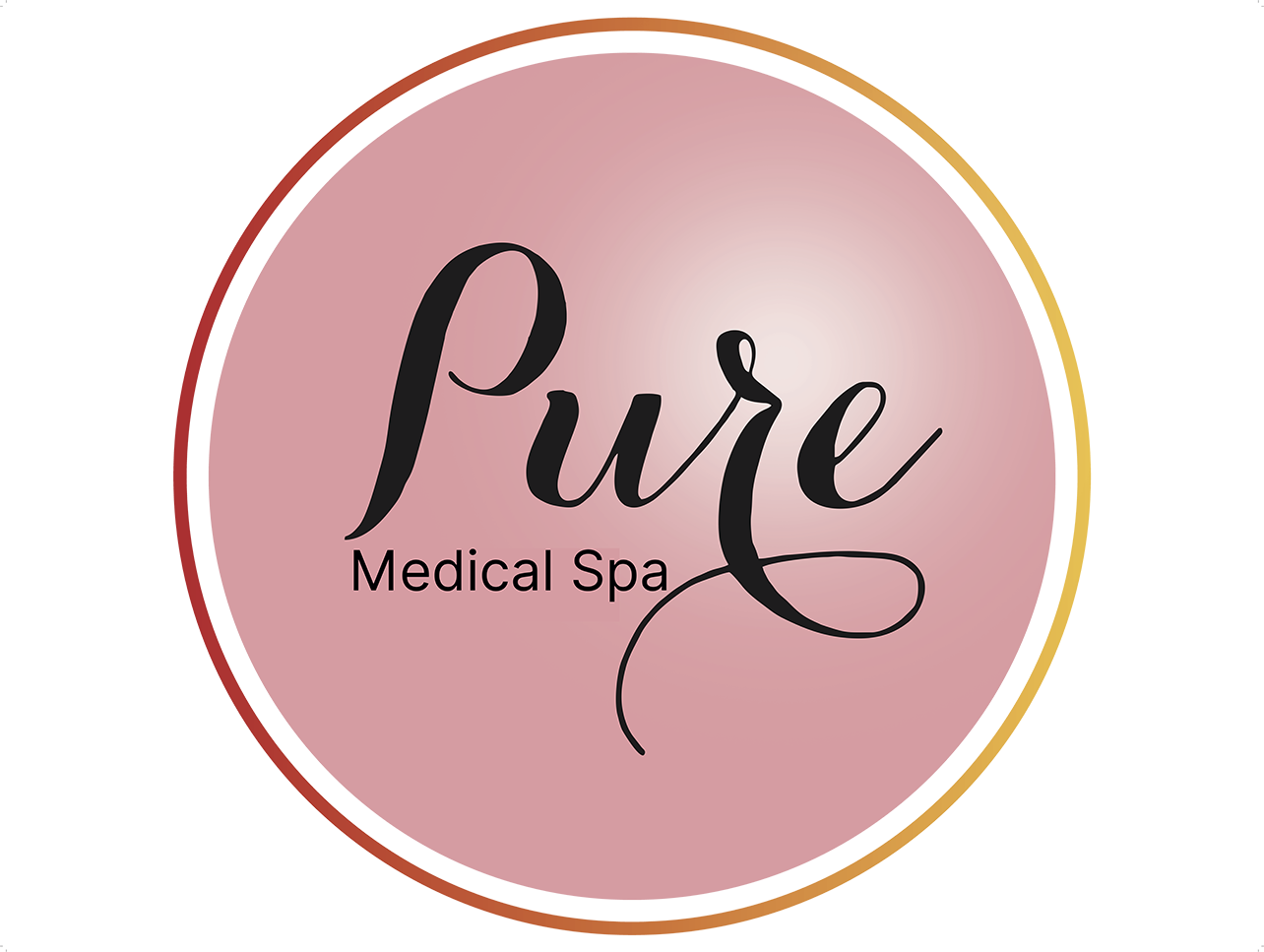At Pure Medical Spa, many clients ask the key question: “How long does PRF last compared to dermal fillers?” To help you understand and decide, here’s an educational, informational and transactional guide comparing the two — what they are, how they work, their benefits, longevity, and how you can book an appointment.
What is PRF and What Are Dermal Fillers?
Platelet‑Rich Fibrin (PRF) treatment is a next-generation, autologous injectable where your own blood is processed to create a fibrin matrix rich in platelets and growth factors. This works via natural collagen stimulation and triggers your body’s own regenerative processes. Research shows that PRF has a three-dimensional fibrin scaffold that sustains release of growth factors such as TGF-β1 and VEGF for longer periods. Lippincott Journals+1
On the other hand, dermal fillers (especially hyaluronic acid-based fillers) are synthetic or semi-synthetic gels designed for facial volume restoration — smoothing wrinkles, filling hollows and adding immediate volume. Key to compare: dermal filler duration, vs the regenerative effect of PRF.
PRF vs Fillers: How They Work
- With PRF, you’re getting a treatment that enhances your body’s ability to produce collagen and elastin over time — a process of collagen and elastin production, not just volume.
- With fillers, you’re achieving an almost immediate “fill” effect — volume restored right away. But once the filler material absorbs or breaks down, you’ll revert unless you repeat the treatment.
- So in the debate of “PRF vs fillers results”, the difference is regenerative/gradual (PRF) vs immediate/volumising (fillers).
- When looking at “PRF vs hyaluronic acid fillers”, you’ll note that hyaluronic fillers often last a fixed period depending on location and product, while PRF’s effect depends on your biology and how well your body responds.

How Long Do They Last?
One of the most important questions: “How long does PRF last compared to dermal fillers?”
Dermal Fillers Duration:
- The dermal filler duration depends on the product, area injected, metabolism of the patient. Many hyaluronic acid fillers last around 6-12 months in typical facial areas (cheeks, nasolabial folds).
- Maintenance is needed — you’ll follow a filler maintenance schedule of repeat treatments every year or so depending on the area and how quickly your body clears it.
PRF Longevity:
- The PRF longevity is variable, but many patients see results lasting 12-18 months (and in some cases longer) because the effect relies on new collagen formation rather than just filling space.
- In a study of intradermal PRF, improvements in skin quality were sustained at 3-6 months. mail.dpcj.org+1
- A review pointed out the advantages of PRF for long-term collagen scaffolding. Lippincott Journals
- Because of this gradual, regenerative mechanism, you ask: “How long does PRF last compared to fillers?” — the answer: you may get longer-lasting structural improvements with PRF, though not necessarily the immediate volume of fillers.
At Pure Medical Spa, we discuss both the immediate & longer-term outlook with you so you can choose what matches your goals.
Why Choose PRF? Benefits and Use-Cases
Here are some of the key benefits of PRF at Pure Medical Spa:
- Natural, autologous treatment: your own blood, minimal risk of foreign material.
- Builds long-term skin quality, not just volume – thanks to natural collagen stimulation and the fibrin scaffold enabling sustained release of growth factors. Lippincott Journals
- Ideal for non-surgical facial rejuvenation, including under-eye hollows (so think of “PRF for under-eye hollows”) and fine lines.
- Can complement fillers or be used on its own depending on your goals.
- Lower risk of filler-specific complications (like filler migration) when used purely for regenerative effect.

The Science Behind Platelet-Rich Fibrin Treatment
The platelet-rich fibrin treatment (PRF) is a breakthrough in regenerative aesthetics derived from your own blood — rich in growth factors that promote wound healing, tissue regeneration, and improved skin texture. Unlike synthetic types of filler, PRF works naturally to reduce wrinkles, tighten skin, and restore a youthful glow without additives. It’s an evolution of platelet-rich plasma (PRP) but with higher fibrin content for long-lasting results and natural-looking results, making it ideal for delicate areas of the face like under-eyes and cheeks.
Why PRF Outperforms Traditional Fillers
While traditional fillers like poly-L-lactic acid or hyaluronic acid offer instant results, PRF stimulates your body’s own collagen production for deeper rejuvenation. There’s minimal risk of allergic reaction, shorter recovery time, and visible improvement that continues over months. This makes PRF (platelet-rich fibrin) a preferred alternative for clients seeking regenerative, non-surgical procedures with subtle, enduring results.
Realistic Expectations & Timeline
When you ask “how long do PRF injections take to show results?”, at Pure Medical Spa we outline this:
- Initial effect: you may notice some improvement within 2-4 weeks as your skin responds.
- Full effect: typically around 8-12 weeks as collagen and elastin are produced — this is the PRF results timeline.
- Duration: 12-18 months on average, with possible longer benefit depending on lifestyle, area treated, and individual biology.
When you ask “how long does PRF last compared to fillers for face”, we can say: fillers provide immediate volume but relatively shorter term (6-12 months) whereas PRF builds over time and may last longer though with less immediate “fill” than volumising fillers.
Also when asking “is PRF better than dermal fillers for long-term results?”, the answer depends on your goal: for immediate volumising, fillers win; for long-term regenerative improvement, PRF may be better.
How to Decide: Fillers, PRF, or Both?
At Pure Medical Spa we tailor the approach:
- If you need facial volume restoration immediately (cheeks, lips, deep hollows) — fillers may be the best first step.
- If you want to improve overall skin quality, texture, and longevity, and prefer a more natural regenerative result — PRF is excellent.
- Sometimes, we combine: do a filler + PRF session so you get both immediate volume and longer-term regenerative benefit (yes: you can book with us for combined protocols).
- We also discuss filler maintenance schedule and the likely repetition intervals so you’re informed.
Summary: How Long Does PRF Last Compared to Dermal Fillers?
- Focus keyphrase: “How long does PRF last compared to dermal fillers” — ask this, get informed.
- Fillers = immediate volume, shorter term (6-12 months) unless maintained.
- PRF = regenerative, building collagen and elastin, might last 12-18 months or more depending, though less about immediate fill.
- At Pure Medical Spa we recommend based on your unique needs.
- Both have their place — one is not “better” universally; it depends on goal and timeline.
- If you want to invest in longer-term skin quality and minimal repeated volume injections, PRF might be the right choice.
- If you want immediate results for a special occasion or volumising deep hollows, fillers might be best.
- You can also combine the two and benefit from both immediate and long-lasting effects.
Additional Reading / Research
For those curious about the science behind PRF and its durability:
- Mahmoodabadi RA et al., “Evaluation of the Effect of Platelet-Rich Fibrin Matrix in …” (2023) showed favorable long-term technique for facial skin. PMC
- Wu QY et al., “Clinical Application of Platelet-Rich Fibrin in Dermatology” (2022) reviewed the regenerative scaffold and sustained growth-factor release. Lippincott Journals
FAQs
Q: “How long does PRF last compared to fillers for face”?
A: As discussed above: fillers 6-12 months (varies by product and site); PRF around 12-18 months (or more) in many cases, because it relies on new collagen, not just filler material.
Q: “PRF treatment results and duration explained”?
A: Yes — you’ll begin seeing improvements over weeks, full effect in 2-3 months, duration up to 18 months or more; repeats keep the effect fresh.
Q: “Is PRF better than dermal fillers for long-term results”?
A: It depends on your goal. For regenerative, long-term skin quality, yes. For immediate volumising, fillers are better.
Q: “How long do PRF injections take to show results”?
A: You’ll see gradual changes starting at ~2-4 weeks, more pronounced by ~8-12 weeks, and results will persist up to 12-18 months plus.
Q: “PRF vs fillers longevity for facial rejuvenation”?
A: Both have roles: fillers for immediate rejuvenation and volume; PRF for sustained rejuvenation via collagen/elastin. For longevity specifically, PRF often has the edge when repeated and maintained properly.
Booking at Pure Medical Spa
Ready to explore this? At Pure Medical Spa you can book your initial consultation where we evaluate your skin, discuss your goals (immediate vs long-term), and map out a custom plan.
- Call or text: 312-312-7873
- Or book online at: https://www.puremedicalspa.us/pure-online-appointments/
- We’ll check your suitability, explain the PRF treatment benefits, address all your questions, and help plan the right timing and package.
References
- Clinical Application of Platelet-Rich Fibrin in Dermatology – Indian Journal of Dermatology, Venereology and Leprology
- Evaluation of the Effect of Platelet-Rich Fibrin Matrix in Facial Rejuvenation – National Center for Biotechnology Information (NCBI)


